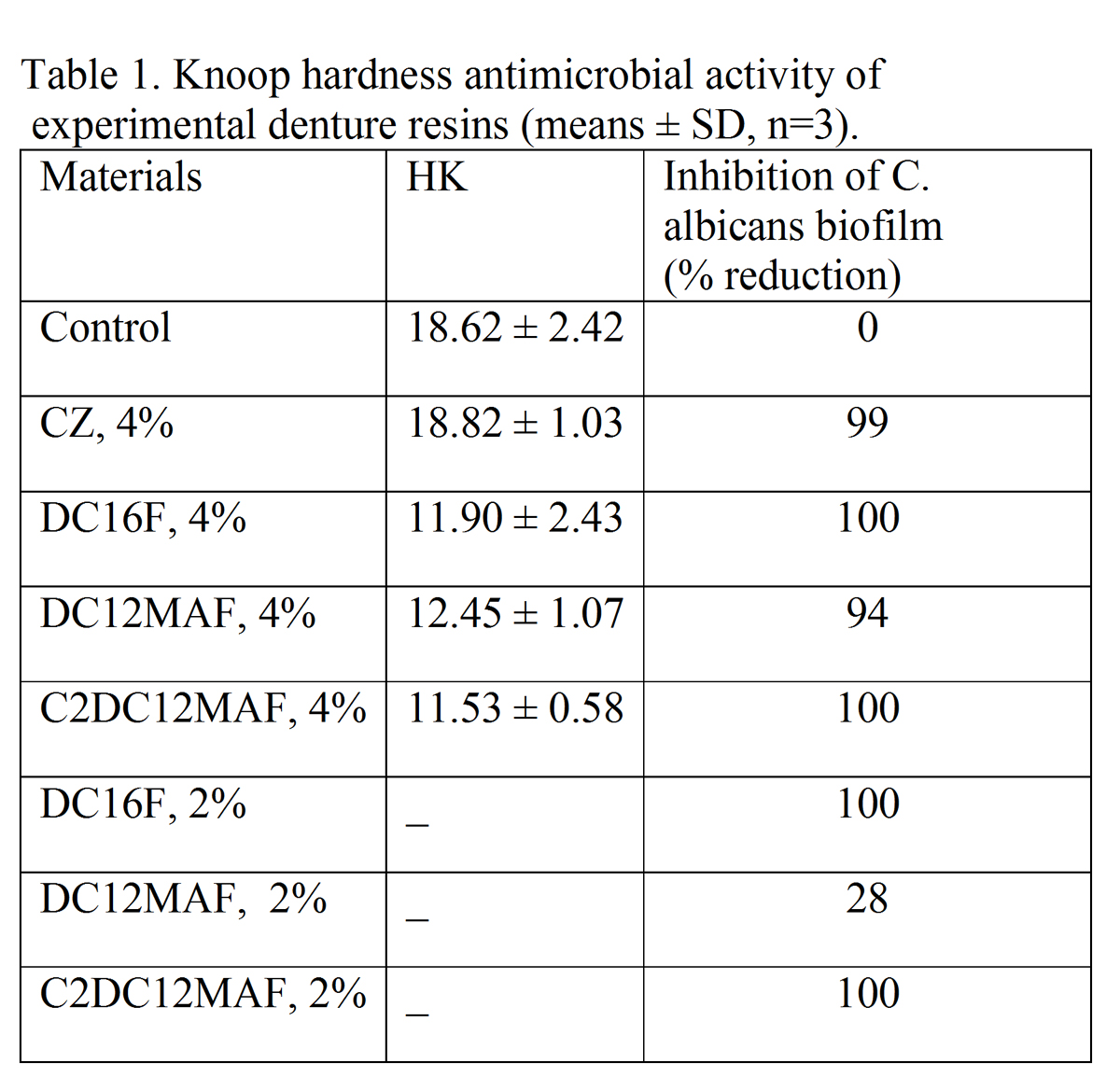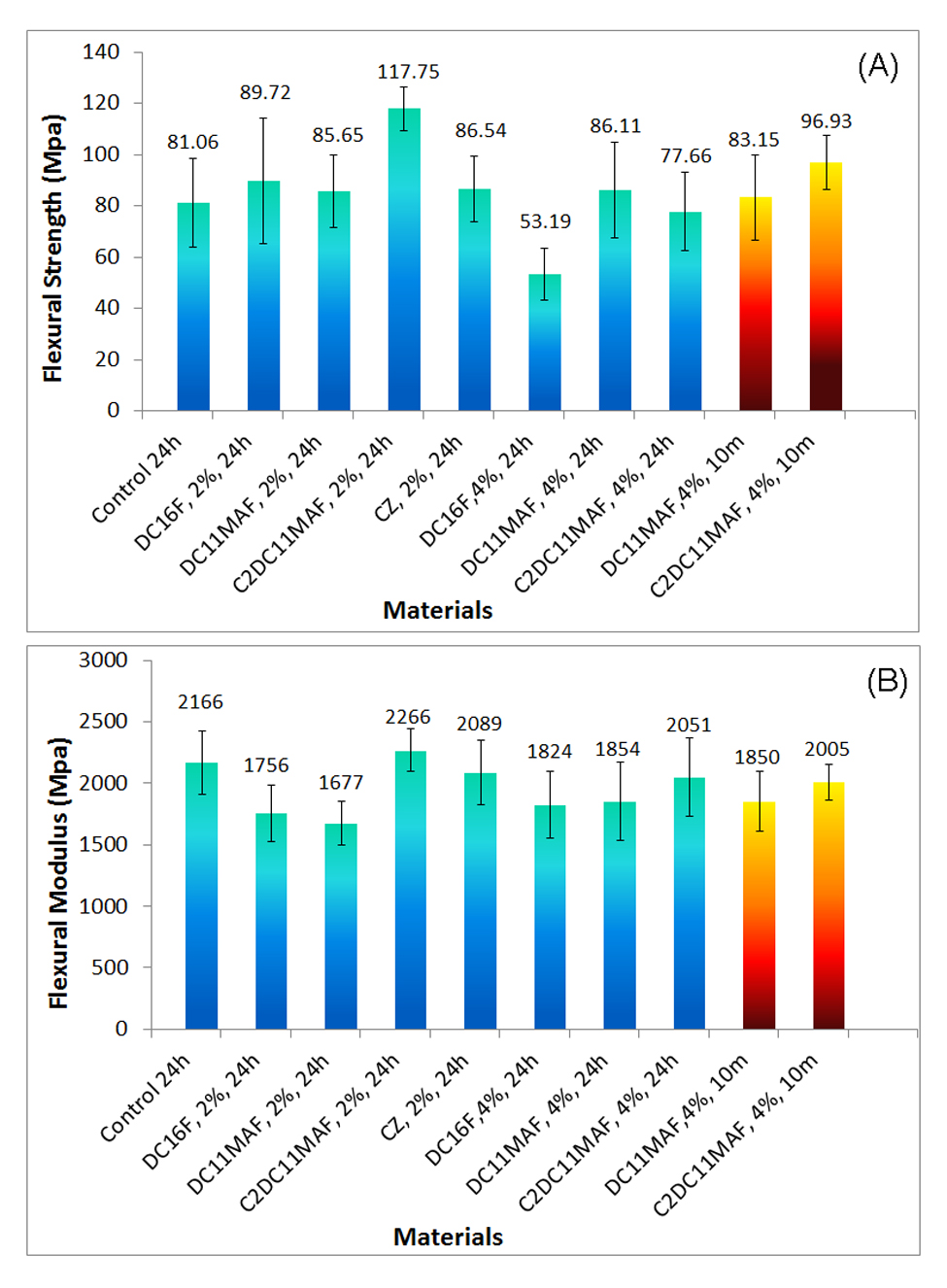Introduction: Denture stomatitis caused by fungi as such as Candida albicans is a common disease among otherwise healthy denture wearers. Thus, denture base materials with fungicidal activity are desirable to reduce the incidence of disease. Recently, a series of antifungal compounds containing 1,4-diazabicyclo[2.2.2]octane (DABCO) have been synthesized in our lab. They have shown significant fungicidal effects against several oral fungi such as Candida albicans, C. dubliniensis, C. glabrata, C. parapsilosis and C. tropicalis (MIC 1~4 μg/mL). They have also shown strong antibacterial effect against Staphylococcus aureus. The objective of this study is to fabricate and characterize novel antimicrobial denture base materials with improved mechanical properties and antimicrobial activity using these compounds.
Materials and Methods: Experimental acrylic denture resins were fabricated by mixing 2.0% or 4.0% of three synthesized DARBCO derivatives with a long aliphatic chains (DC16F), methacrylate monomers (DC12MAF and C2DC12MAF), and clotrimazole (CZ, positive control) with Ivocap High Impact (Ivoclar Vivadent, negative control), injected to the flask, and heat cured according to manufacturer’s instructions. Rectangular specimens (2x2x25 mm, n=12) were prepared for mechanical test and disk specimens (10 mm dia., 2 mm thick, n=3) were prepared for antifungal biofilm-inhibition test and hardness test. Flexural strength and modulus were tested after 24 hours and 10 months. Knoop hardness (HK) was also tested 2 hours after heat cure. The inhibition of C. albicans biofilm formation was tested utilizing the colorimetric XTT cell viability assay. The data were analyzed by one-way ANOVA and Tukey post hoc test.
Results and Discussions: The Knoop hardness and inhibition of C. albicans biofilm are shown in Table 1. 2% or 4% of DC16F or C2DC16MAF can completely inhibit C. albicans biofilm (100% reduction) while DC12MAF is less effective. The flexural strength and modulus are shown in Figure 1. The denture base materials containing 2% C2DC16MAF has the highest mechanical propoerties.
Conclusion: Antifungal acrylic-based denture base materials can be fabricated with 2% - 4% of novel antifungal compounds with similar mechanical properties to the commercial material. The material containing 2% C2DC16MAF has the highest mechanical propoerties and best antimicrobial effect.


Figure 1. (A) Flexural strength and (B) flexural modulus of antifungal denture base materials.